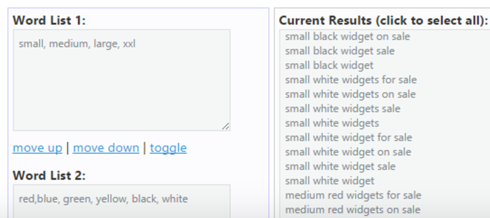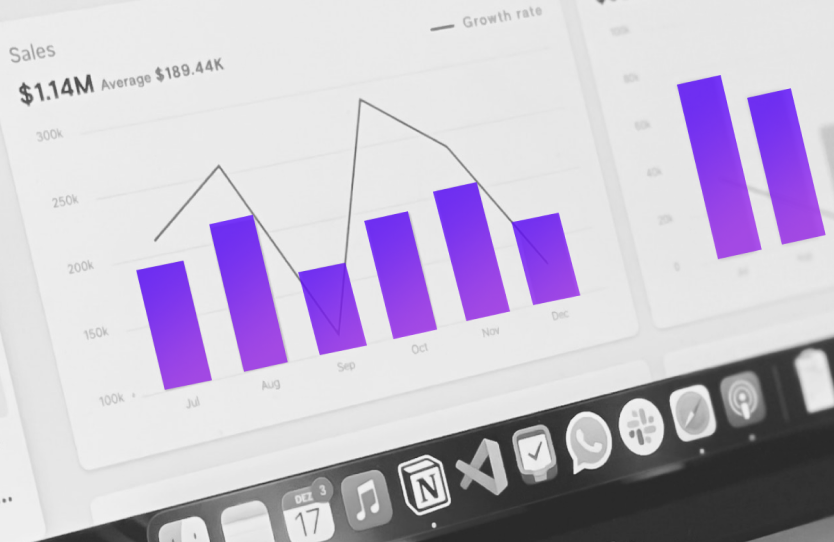How To Do SEO Keyword Mapping: the Right Way

Keyword maps can take a variety forms and still guide your site to SEO success. There’s no one-size-fits-all template. However, there a few things you must do if you want to do it right.
When you’re planning out your keyword mapping strategy, there’s a lot to consider, and a lot of methods to use for the process.
In this post, I’ll share these essential tips for proper SEO keyword mapping, and some specific examples of how we’ve executed those tips here at Adept – including keyword mapping templates you can use for your own efforts.
What is SEO Keyword Mapping Anyways?
Keyword mapping is the process of figuring out a plan of which pages you’ll attempt to get ranking for your target search queries.
In a nutshell, to do keyword mapping the right way, you’ve got to:
- Understand who your target audience is, what they’re searching for, and what content they want to see
- Segment the target search queries and figure out what content and pages (new or existing) would best match those search query segments to maximize the value of SEO traffic for your site
When you’re doing it right, there’s generally 4 main steps involved:
- Non-SEO research
- Map the current site
- Keyword research and analysis
- Re-map the site’s new content architecture, specifying exactly how the target keywords fit into it
Let’s go over those in depth.
1. Non-SEO Research
Before you can even begin working on content and marketing recommendations for SEO, it’s essential that you understand 3 things off the bat:
- Why? What are the overall marketing goals?
- Who is the target audience, and what do they want?
- What are you selling, exactly?
This is a step many SEO agencies skip or rush through, much to their clients’ detriment. But it’s critical to understand what the keywords you’re researching actually mean, and if ranking for them would bring traffic that would do anything to help overall marketing objectives.
At Adept, we’re constantly trying to improve our understanding of goals, audience, offering and jargon – it’s not only step 1, but part of how we do steps 2, 3, and 4, too.
2. Mapping Current Site
To do keyword mapping right, you’ve got to make sure you understand which search queries and content currently drive traffic and conversions.
There’s many forms the review might take, but doing it right typically means identifying:
- Top pages for SEO key performance indicators – like organic traffic and conversions
- Top keywords for those pages – which usually involves the data from Google Search Console’s Search Analytics report)
- Contribution of pages with the most authority / link equity – be sure to review the pages linked to from the main menu and identify underachievers
- Notable non-SEO contributors, especially pages that really help with conversions a lot – like FAQ or About Us pages, for example
3. Keyword Research and Analysis
Once you understand the scenario and the site, it’s time to identify the segments of keywords you want to go after.
The Right Way:
- Start big. To ensure you don’t miss any important keywords during the initial exploration phase of keyword research, start with by identifying all the different keyword groups you can find that potentially offer significant value to SEO efforts. You’ll whittle the list down later.
- Analyze and prioritize. Evaluate the data on keywords’ quantity, quality, and difficulty, and identify the most attractive keywords.
- Understand intent. Take time to figure out what people are searching for. In 2017, “search queries” is actually a far more appropriate term than “keywords.”
- Look past the individual keywords and into themes, topics, and segments of search queries.
- Consider different ways of segmenting the keywords. Evaluating different mappings will produce a far superior end product. Keyword-tagging is my preferred method here.
Examples:
There are a ton of great templates for keyword research analysis and mapping that different SEO experts use. Below are some of examples of templates we’ve used:
 keyword analysis
keyword analysis
 keyword tagging
keyword tagging
 keyword mapping
keyword mapping
Advice on keyword tagging:
I use the phrase “keyword tagging” here to simply describe the process of giving helpful descriptive labels to keywords, where each keyword can have as little or as many tags as you choose.
With some Excel tables, it’s actually quite easy. Just filter your keywords columns as desired, then enter your tag in the appropriate tag column and auto-fill it to bottom. Then, rinse and repeat until done.
 tagging keywords in Excel
tagging keywords in Excel
Benefits and Applications:
- Some find tagging keywords tedious – while not always necessary in simple scenarios, it’s about the only way to do complex keyword mapping projects right
- Tagging keywords is also essential in mapping ecommerce sites, where it’s often best for UX and SEO that products or subcategories live in multiple parent categories. Tags help show different possible categories and what can go in them (for example, you might identify that there should be both Small Widgets and Steel Widgets categories, and that “small steel widgets” should be findable through both categories)
- Tags identify how keyword segments overlap, which can provide internal linking ideas for any site
- Tagging makes it easier to spot quantifiable patterns in the data (metrics are often statistically insignificant at the individual keyword level – due to insufficient visits, for example)
- Most rank-tracking tools support keyword tagging – so you can be ready to track performance on your target keyword groupings as soon as you identify them
Examples:
Below is an example of how we might come up with the tags for Acme’s ecommerce site:

You may find some of the types of tags above can apply to your own company’s keywords, particularly if you sell products.
If you are a service company with a site for generating leads, you might have different set of tags-types, like…
- type of service
- service attributes (fast, cheap, luxury, etc.)
- need or application
- market/industry/niche
- location
- company or “summary-signaling” terms
- intent modifiers
One Last Tip on Tagging:
I like to draft a starting tagging framework at the beginning of keyword research, to help me with “seeding” for generating the initial list of keyword ideas. It comes particularly in handy with combining two seed terms into keyword ideas.

4. Crafting the SEO Sitemap
All the previous work is for this final step. If you’ve put in the work, it’s just a fun game of picking, matching, and prioritizing.
A proper SEO sitemap is rooted in a deep understanding of what content the target audience(s) is looking for; it is a guide of how you’ll provide that content to them in a logically structured manner.
An SEO sitemap done the right way:
- Matches target search queries to pages (new or existing)
- Defines internal linking and information architecture
- Keeps in mind constraints on finite resources to provide a cost-effective approach
- Defines SEO priorities (all keywords and pages are not worth the same effort – prioritization is super important in SEO, as it is almost always the case that a small minority of pages will generating the vast majority of results)
- Enhances conversion rate and user-experience by providing the right users with the right information, never sacrificing UX for narrow-minded SEO strategy like simple keyword-stuffing
It can be a simple looking thing. In fact, if you’ve boiled down complex analysis into an easy to understand one page keyword mapping document, you’ve probably done it right. Example:

A Final Step – Rinse and Repeat
Keyword mapping is so vital to SEO that it should never truly be considered finished.
Obviously, I’ve gone over a lot for you to consider, and it doesn’t always make sense to tackle every possible keyword all at once. For larger websites, it’s okay to start with a summary analysis and plan, and map out the keyword details section by section – as long as we’re constantly working on mapping our keywords “the right way.”
Ready to make your own?



